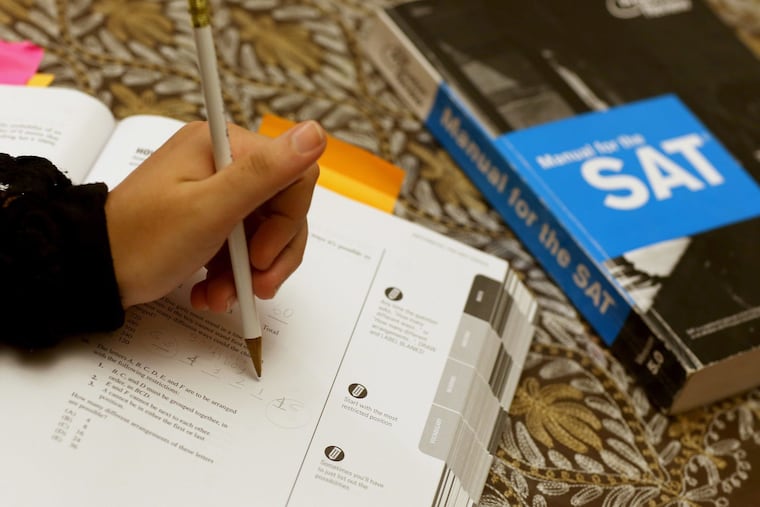College SAT results to include another score: Hardship in students’ lives
An “adversity score” will be added to SAT college entrance test results, rating applicants on environmental factors meant to offer admissions officers a glimpse into a student’s socioeconomic background, the College Board said Thursday.

An “adversity score” will be added to SAT college entrance test results, rating applicants on environmental factors meant to offer admissions officers a glimpse into a student’s socio-economic background, the College Board said Thursday.
Only admissions offices at colleges and universities will be able to view the score, which will range from 1 to 100, with 50 representing the national or state average of recent high school graduates, the testing organization said.
A series of factors will be considered based on neighborhood background, including crime rates, housing stability, and the percentage of students eligible for free and reduced lunch at the applicant’s high school.
David Coleman, CEO of the College Board, said the tool, dubbed the Environmental Context Dashboard, “shines a light on students who have demonstrated remarkable resourcefulness to overcome challenges and achieve more with less.”
Over the years, data have shown that students from wealthier socio-economic backgrounds tend to score higher on the SAT, thus giving them a leg up in the admissions process.
The new score, first reported by the Wall Street Journal, has already been piloted at 50 colleges and universities and will be expanded to 150 more this fall.
Anurima Bhargava, who led civil rights enforcement in universities for the Justice Department during the Obama administration, said the score will help illuminate factors for college admissions officials to consider when reviewing applications.
The ongoing national college admissions scandal, in which a group of wealthy parents have been charged with hiring people to rig their children’s test scores to gain admittance into top universities, revealed structural problems in the admissions process, Bhargava said.
The new score takes into account factors that have potentially had a significant effect for an applicant, such as community crime levels, she said.
“Trying to actually create structures which account for the kinds of things that have been barriers to people being able to have a fair and inclusive admissions process is important,” she said.
The College Board says it developed the tool as a data-driven model to identify applicants who face hardships by focusing on their high school, neighborhood and family environment.
Florida State University in Tallahassee is among the schools that have tested the tool. John Barnhill, associate vice president for enrollment management, said it was used in reviewing nearly 60,000 applications each year for its last two incoming undergraduate freshman classes.
“Many of us have tried to use different types of ways to assess that, whether it’s our knowledge of a state or neighborhood,” Barnhill said.
The tool allowed the school to look at how a student’s test score compared with his or her school’s average, or housing stability in their zip code, he said, providing a more substantial picture of factors that shaped an applicant’s life. As a result, the school admitted more students whose backgrounds fell into the 50 to 100 range, Barnhill said.
“To say it has played a big role is overstating it,” he said, “but it has played what I consider a significant role.”
Bhargava said the admissions process has long been viewed primarily through the prism of educational performance. The new score will offer an additional look at the background environment that helped shape the life of an applicant.
“There are ways in which [the score] is trying to account for something that I think is incredibly important, which is: What are the ways in which there may be community-level trauma that a student is experiencing,” she said, “and how do we account for that?”